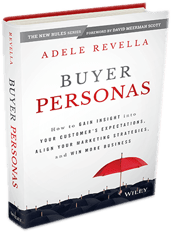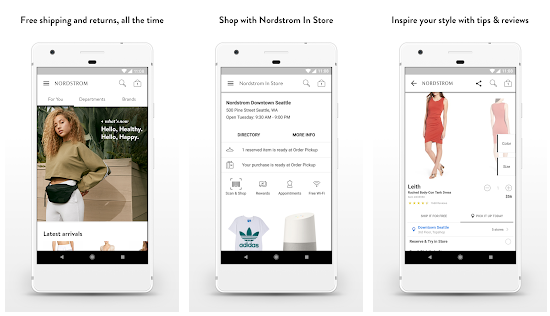
We often hear the expression “a person’s perception is his (or her) reality,” and there’s no exception when it comes to the way a customer feels after interacting with your company’s products or service.
The whole idea of customer experience (CX) is based on customer perception. Even if you believe that your engagement with clients is perfect, the actual customer experience might be different. It’s important to know what your firm’s customer experience definition is, for you to be able to live up to it.
Before you can figure out how to define customer experience for your business, however, it’s vital to understand what it is.
A general customer experience definition.
Customer experience is defined as the way in which customers view their interactions with your company, according to Forrester. This includes the customer journey, the various brand touchpoints the customer engages with, and the place where engagements happen, such as online, in person, by telephone, and in-store.
The interactions creating a customer’s experience include every form of contact with your company, from advertising materials to packaging, news articles, word of mouth recommendations and encounters with your employees.
Everything your customer goes through is part of it, whether it’s good or bad, it involves emotional and physical aspects, and if it happens as a result of the company’s actions or the customer’s.
What is YOUR customer experience definition?
A customer experience definition is a statement describing the meaning of the term customer experience.
In the context of the modern concept of CX, this needs to take into account the expectations of your customer, their experience using digital methods to engage with your company and buy from you, and the ways in which you enable them to do so.

Once you have this information, you’ll be able to define a customer experience strategy that helps improve the customer journey from the first point of content to the last.
You can use various methods to develop customer experience strategies that will work in your industry. To do so successfully, we’ve put together a series of customisable steps that will leave you with a complete template to follow.
Step 1: Identify your personas.
Before you can develop a comprehensive customer experience management definition for your company, you need to know exactly who your potential clients are.
The best way to determine this is to research your existing list of customers, as well as those customers your competitors are selling to. Find out what they buy from you and how they use it. Look for common characteristics and interests between them.
Figure out what they get from your product or service. This might seem obvious to you, but you aren’t looking for the features here, but the benefits. For example, a graphic designer might offer high quality design services. The benefits customers get from buying those services is that they end up with a professional logo. This attracts more buyers to their company because they appear solid, stable and trustworthy, rather than a fly-by-night operation.
 Develop a vision of what a typical person looks like, their gender, age, family status, hobbies, income level and other factors that put them into categories. This helps you to understand who you’re talking to, and how to reach them, which are important aspects of your customer experience management (CEM) strategy.
Develop a vision of what a typical person looks like, their gender, age, family status, hobbies, income level and other factors that put them into categories. This helps you to understand who you’re talking to, and how to reach them, which are important aspects of your customer experience management (CEM) strategy.
Book Recommendation: How to Gain Insight into your Customer’s Expectations, Align your Marketing Strategies, and Win More Business - By Adele Revella
BUY HERE
Step 2: Improve your ability to reach customers.
The ability to reach people with your communications plays a big part in the customer service experience your company delivers.
If you aren’t reaching your clients in the places they hang out—whether online or in real life—then you’re not likely to be top of mind when they need the products or service you provide. To meet them wherever they are, you need to know a few things:
- Exactly who your potential customers are
- Which digital channels they use the most
- How best to talk to them on those channels
It works both ways, too. Don’t make it a difficult user experience for customers to contact you. Set up direct contact options that are staffed at all hours, even if you’re just using an automated chatbot to respond.

Give customers a choice of options for getting answers, including Facebook, Messenger, and Twitter. They expect social service these days, and statistics from HootSuite show 67% of customers have used live chat, social media or texting to contact customer service at some point.
Step 3: Offer convenient customer services.
As people learn and get more used to looking for information and solutions on the internet and social media, it gets more and more important for your customer experience definition to include providing convenient options.
Limiting your customer services availability to business hours, for example, doesn’t help people who live in a different time zone or who work unusual shifts. With so many companies now offering 24/7 service, if you don’t do the same it means they won’t be able to get your help when they need it.
Customers these days expect to be able to find assistance at any time of the day or night. Even just having up-to-date information on your website and social media profiles can make the difference between a good customer experience and a poor overall customer experience.
Step 4: Make it easy to buy.
Most people have preferences when it comes to buying, whether this applies to small or large items or intangible services.
Online shopping has made it easy to find items, but they aren’t always simple to get hold of. When a customer needs to order the colour or size item he wants from far away, pay in advance to get it to where he can view it, then perhaps pay for return shipping if it doesn’t work for him, that’s a poor customer experience.
Clothing chain Nordstrom recently took a leap towards improved customer-centricity with its new app, which allows users to choose the items they fancy on their mobile device. They can then arrange to have them delivered to the store they prefer and set up in the fitting room to try on at a specific time.
For companies that aren’t yet ready to do something quite that dramatic, just having accurate pricing and information about stock availability on your website can reduce the friction of buying online. To determine your particular customer expectations definition, you’ll need to do research to find out exactly what your clients consider valuable. This will help improve your reputation through word of mouth and increase your sales.
Make your sales channels easy to use, too; anyone who has ever landed on a non-responsive website on their mobile device knows how quickly they left the site. Make sure your navigation is simple to understand and customers don’t have to get to their desktops before they can buy, or they’re likely to leave your website without doing so.
Think of Amazon’s option to buy with one-click, and figure out how you can improve your ability to reach your target customer. By making it painless for him to find what he needs, you’ll be able to deliver a great customer experience.
Step 5: Measure the results.
It’s not enough to develop a customer experience definition for your business, you also have to implement it and then measure its effectiveness, for it to be worth the effort. When you know what a good digital customer experience definition is for your target audience, you can find ways to deliver a strong customer experience.

One way to measure this is to use the Net Promoter Score (NPS) method as part of your customer experience management system, which is an index ranging from -100 to 100. The score measures the willingness of customers to recommend the company’s products or service to others and is used to plan new ways to increase customer satisfaction and loyalty.
The NPS method also works well in combination with Customer Effort Score (CES) and Customer Satisfaction Score (CSAT).
Getting it right.
If your company is just starting out with defining a customer experience management strategy, a customer experience futurist can help you determine your net promoter score and implement the steps laid out above. This will set you on the right path with a template to follow and help you achieve success in your business.

